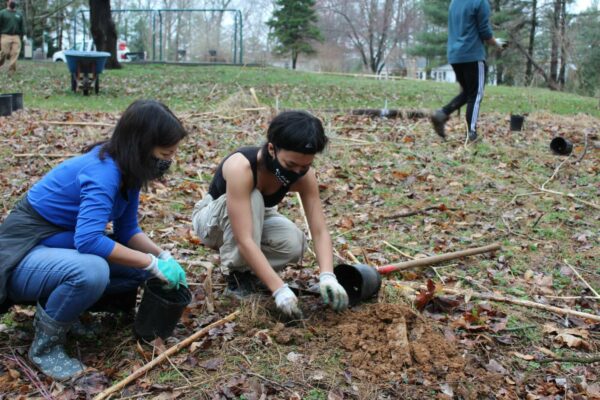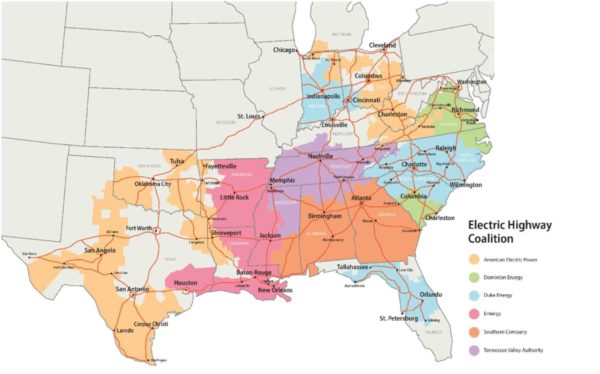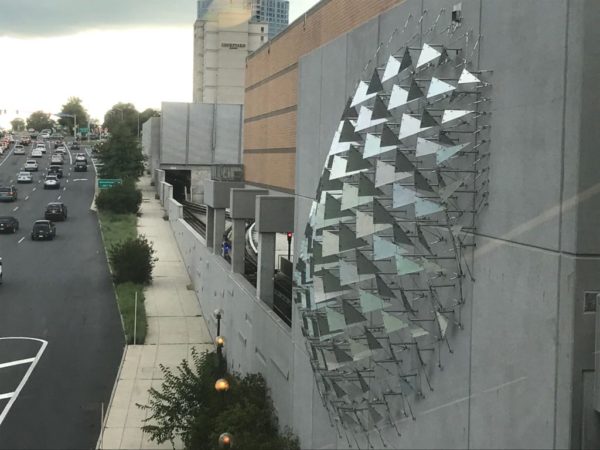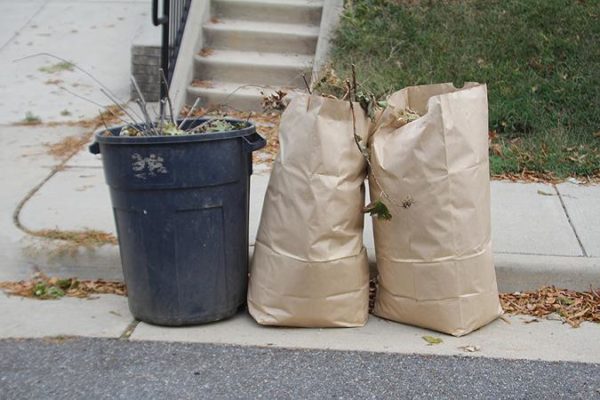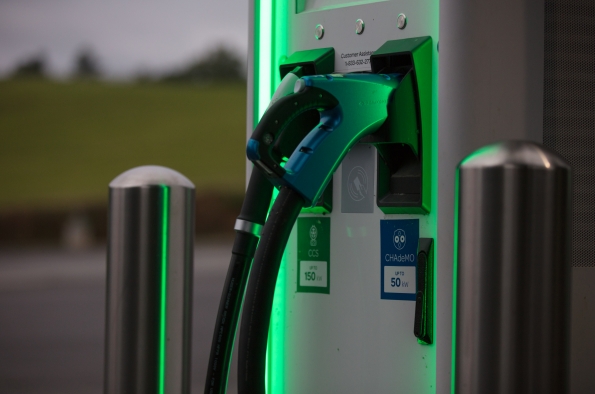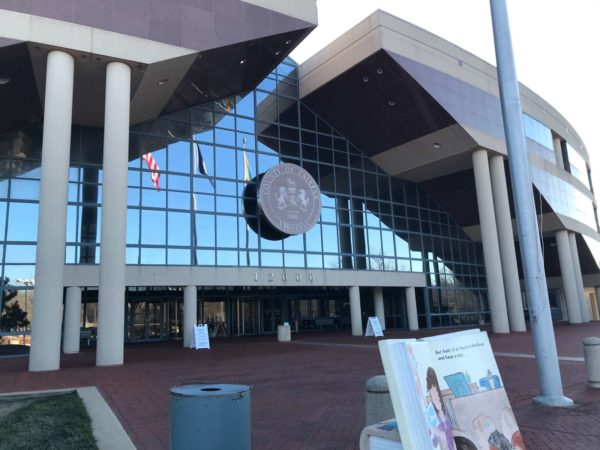Local Plastic Bag Tax to Begin — At grocery stores, convenience stores and drug stores, a five-cent tax will be charged for each single-use plastic bag for customer purchases. The Northern Virginia Waste Management Board is working on outreach to help with the transition. [Patch]
County Launches New Photo Contest — The First Hike Fairfax contest returns next year with more categories for photographers to submit entrants. Participants can submit photos from any trails managed by the Fairfax County Park Authority. [Fairfax County Government]
Christmas Tree Recycling Underway — Christmas trees will be collected from Jan. 3 to 14. Lights, decorations and stands must be removed to ensure trees can be collected. [Reston Patch]
Photo via vantagehill/Flickr
Giant Employee Arrested in Connection with Embezzlement — A 54-year-old employee at Giant in North Point Village Center was arrested on Dec. 12 on embezzlement charges. Police said that an internal investigation found that the suspect was reportedly taking merchandise from the store without paying. [Fairfax County Police Department]
Trains Run on Silver Line Extension — Test trains have been running on the Silver Line extension in Fairfax and Loudoun County. Officials announced that the project has reached substantial completion last month. [Inside NOVA]
Plastic Bag Tax to Begin — Beginning Jan. 1, residents will have to pay a five-cent plastic bag tax for disposable plastic bags, including grocery stores, convenience stores, and drug stores in the county. [Fairfax County Government]
New art in Reston envisions a scenario in which the U.S. Capitol Grounds is taken over by a swamp and vegetation even entangles the historic building itself.
The exhibit by Andrea Limauro, a D.C. city planner who has worked on flood resilience efforts for the district, is being shown in Reston Town Center at the Signature apartment building (11850 Freedom Drive).
“So much of the work in this show is inspired by my daytime work looking at flood plains and sea level rise in the District and imagining a not so far fetched future scenario where the capital is taken over by water and a new tropical fauna and flora,” he said in an email. “I do not believe these are inevitable outcomes but I like for my paintings to provide the alarm.”
The artwork started being on display earlier this month, and an opening reception will be held at 6 p.m. Oct. 22. An in-person reception and brief artist talk will be held at the outside courtyard, noted Tephra Institute of Contemporary Art, which hosts and selects exhibits in its satellite gallery at Signature.
Tephra described the art with the following:
Through his attentive and laborious process of screen printing and careful painting, Limauro’s works bring into focus the looming nature of disasters due to the effects of climate change. Through the employment of striking color combinations, metal leaf, patterns, and minute details, the illusion to a dystopian future of the DC region entices the eye.
D.C’s Office of Planning further notes that Limauro has served as the point of contact on “sustainability and climate planning for the Neighborhood Planning Division.”
The centerpiece of the show, “A Rising Tide Lifts All Boats,” is a 12-foot-long “dystopian painting about the increased risk of flooding due to climate change in Washington, D.C.,” the artist notes on his website, where rising water affects historic sites from the Washington Monument to the Lincoln Memorial and beyond.
Visitors can view the paintings Tuesday through Saturday from 11 a.m. to 5 p.m. Face masks are required but reservations aren’t.
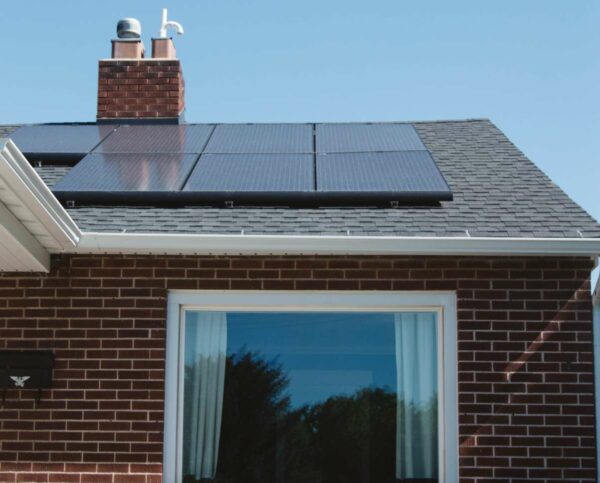
On the heels of last week’s sobering United Nations climate change report, Fairfax County is beginning to implement its first-ever Community-wide Energy and Climate Action Plan (CECAP), which sets goals for reducing greenhouse gas emissions.
Fairfax County staff delivered a final update of the CECAP to the Board of Supervisors during its environmental committee meeting on July 20. The board is expected to accept the report when it meets on Sept. 14.
The CECAP provides an inventory of current greenhouse gas emissions and recommends actions that the county and individuals can take to mitigate future emissions in order to achieve carbon neutrality within three decades.
“A lot of times, people feel like this problem is so big and out of their hands, that they feel like they can’t make a difference,” Fairfax County Office of Environmental and Energy Coordination Senior Community Specialist Maya Dhavale said. “I feel like it’s very timely that Fairfax County has been putting this plan and report together…We’re able to provide residents, business owners, and individuals in Fairfax County a path forward.”
Dhavale, who spearheaded the project, says staff have already begun the process of implementing the plan. That starts with community outreach, public education, and a review of existing county policies to determine how they line up with the proposed plan.
First proposed in 2018 and initiated in early 2020, the CECAP report was developed by a working group composed of environmental advocates, business representatives, civic association members, and other citizens.
As an overarching goal, the work group proposed that Fairfax County become carbon-neutral by 2050 with an 87% reduction in greenhouse gas emissions from 2005 levels.
The Board of Supervisors has already pledged to make county government operations — including building and facility energy use and transportation — carbon neutral by 2040 in conjunction with an updated operational energy strategy adopted on July 13.
The county’s recent push to prioritize environmental initiatives comes as the U.N. continues to sound the alarm on climate change as a crisis that’s already in motion and will only get worse without a substantial shift in human behavior.
In its latest report released on Aug. 9, the Intergovernmental Panel on Climate Change estimates that human activities are directly responsible for a roughly 1 degree Celsius climb in the global surface temperature from 1900 to 2019, contributing to retreating glaciers, rising sea levels, ocean acidification, and increased frequency and intensity of extreme weather events.
Even if future emissions are kept very low, global temperatures will continue going up until at least the mid-21st century and could very likely still be one to 1.8 degrees Celsius higher than 1900 levels by the end of the century, according to the report.
“Stabilizing the climate will require strong, rapid, and sustained reductions in greenhouse gas emissions, and reaching net zero CO2 emissions,” IPCC Working Group I Co-Chair Panmao Zhai said in a news release. “Limiting other greenhouse gases and air pollutants, especially methane, could have benefits both for health and the climate.”
In their report, the CECAP working group says the impact of climate change on Fairfax County is already evident in declining snowfall, more extremely hot days, heavier rainfall, and increased incidences of mosquito and tick-borne illnesses. Read More
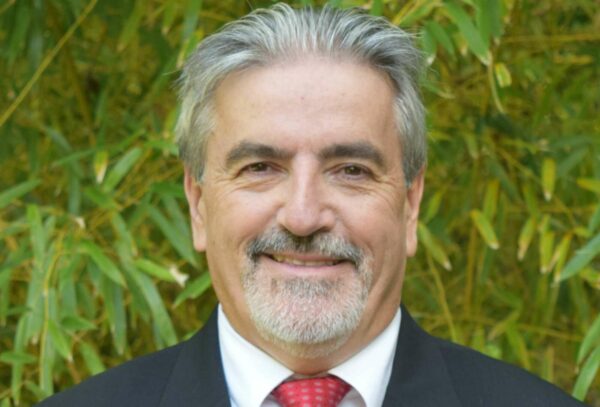
The Reston-headquartered Fortune 500 company Science Applications International Corp. known as SAIC (12010 Sunset Hills Road), has hired its first chief climate scientist.
Stephen Ambrose joined the information technology and engineering government contractor in early May. His decades of previous experience in climate science includes a 25-year tenure at the National Oceanic and Atmospheric Administration.
“Climate change is one of the grand challenges of our time,” Bob Genter, president of the defense and civilian sector at SAIC, said in a news release. “Stephen brings a wealth of experience and expertise to SAIC as we continue to help our customers rise to this challenge with solutions scaled to meet all levels of climate and disaster risk and adaptation.”
Ambrose is particularly interested in assisting government customers with strategic planning for disaster responses and preparation not just at the federal level, but also states and localities.
“How are we prepared for these disasters? More hurricanes. Stronger hurricanes. Flooding,” he said. “The most opportunity we should go forward with is…in that effort.”
Ambrose’s primary responsibilities include helping the company understand climate change and its impacts, examining the available science and technology and applying those to climate questions, and working with customers to address issues related to climate change, resilience, and adaptation.
“His experience will guide SAIC’s efforts to support government customers as they advance solutions to deal with the impacts of climate on land, air, sea, wildlife, and civilizations around the world,” the company said in the news release. “He’ll also promote solutions for measuring and addressing climate challenges, leveraging SAIC solutions and capabilities in data science, modeling, artificial intelligence, machine learning, and analytics.”
In addition to working for NOAA, Ambrose’s career includes stints with the Department of the Interior, Environmental Protection Agency, and NASA, where he spent 10 years as a program manager executive for disasters, homeland security, and water resources.
Before joining SAIC, he was a senior advisor and program manager at General Dynamics Information Technology (3150 Fairview Park Drive, Falls Church).
With about 26,000 employees, SAIC primarily contracts with the Army, Navy, and agencies in the Department of Defense, but it’s also served NASA, the Department of Homeland Security, and other federal partners.
In March, the company’s annual filing showed $7 billion in revenue for the past fiscal year — 98% of it involving the federal government.
SAIC’s decision to hire a chief climate scientist comes amid a renewed focus in the U.S. on addressing climate change and other environmental issues.
As one of his first executive actions, President Joe Biden set a goal to eliminate carbon pollution from the power sector by 2035. He also wants the country to cut its greenhouse gas emissions in half from 2005 levels and make all electricity renewable by 2035.
“You can tell by the administration and the focus on climate change, it’s just everyday…coming out from that so quickly, that we have to respond to that,” Ambrose said.
On a local level, the Fairfax County Board of Supervisors pledged yesterday (Tuesday) to achieve carbon neutrality for all government operations by 2040, following up on a recommendation issued by the county’s Joint Environmental Task Force last year.
However, with county government facilities accounting for a relatively small amount of emissions, the private sector also needs to do its part to combat climate change, and Ambrose says SAIC is well-equipped to contribute.
He says his work will bring the company “to the forefront” of this issue, building off of ongoing efforts with different government agencies, from the Federal Aviation Administration to military bases.
“The team I have is growing rapidly,” Ambrose said. “I consider all of SAIC my team because I’m horizontal across all aspects of it.”
Ambrose says his first year on the job is more focused on planning, including developing a five-year plan with milestones for the company. He’s also working on some events to engage employees and the general community, starting with a public forum that will include a panel of speakers from NASA, NOAA, and universities.
(Updated at 6:20 p.m.) While most schools are wrapping up and kids are headed into vacation mode, Flint Hill School junior Zoe Bredesen is making her mark on Reston’s environment by organizing tree plantings.
A Girl Scout since she was 5, Bredesen is now pursuing the organization’s highest award with her goal to plant at least 400 trees throughout Fairfax County, and she is working with Reston Association to achieve it.
The Girl Scout website says scouts can earn the Gold Award by finishing at least 80 hours of community service and showing “proof that not only can she make a difference, but that she already has.”
Bredesen has been passionate about the environment for as long as she can remember.
“I grew up in a very forested area,” she said. “So, I’ve always just really loved trees and nature, and climate change is something that I’m very concerned about. It’s one that I think demands radical, substantial effort to combat.”
Bredesen recognized that her ability to bring about the large-scale changes necessary to address climate change on a global level was limited, so she decided to focus on a project that would make an impact in her local community.
“I can’t shut down BP Oil or make every county use sustainable energy,” Bredesen said. “…One thing that I can just do as just me is plant trees to take in some of the [carbon dioxide] and put out fresh oxygen to combat atmosphere pollution. So, that’s just what I’m doing as a single person trying to make a difference.”
Bredesen has now been working on the project for two years with assistance from fellow students in the environmental club that she leads at her school. The group has planted 250 trees to date.
While the COVID-19 pandemic slowed their work due to the need to minimize the risk of close contact in large groups of people, Bredesen and her team have stayed committed to her goal.
Most recently, she worked with Reston Association volunteers and environmental resource staff to plant 40 trees along Moorings and North Shore Drive.
The next planting event will take on June 26 at 10 a.m., again in collaboration with RA.
In order to attend, participants must sign a COVID health waiver. Anyone who is interested in helping can contact Volunteer Reston Manager Ha Brock at [email protected].
Bredesen says she started working with RA, because she needed to get permission to plant on the grounds of their facilities. She has collaborated with other organizations as well, including Claude Moore Park and a homeowners’ association in Ashburn.
During her project, Bredesen has been helping train volunteers on how to plant and take care of the trees. She will be turning to the Reston community for help at the next planting, since many of her usual helpers from the school environemntal club will be away on summer vacation at that time.
Bredesen says spring is typically the best time to plant trees because that’s when they have the best chance of surviving. Summer into the early fall works as well, but trees have the “lowest chance of succession” during the winter months.
“Now that more people are getting vaccinated and covid restrictions are loosening, if we could get more people coming together to plant trees with the common goal of reducing our carbon footprint, I think that’d be awesome,” Bredesen said.
Photo via Volunteer Reston/Facebook
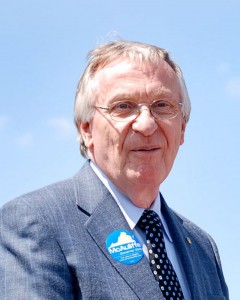 This is an opinion column by Del. Ken Plum (D), who represents Reston in Virginia’s House of Delegates. It does not reflect the opinion of Reston Now.
This is an opinion column by Del. Ken Plum (D), who represents Reston in Virginia’s House of Delegates. It does not reflect the opinion of Reston Now.
The highlight of last week along with Earth Day was the announcement by President Joe Biden that the United States is returning to the Paris Climate Agreement. The Agreement that was adopted by nearly 200 nations of the world came into being in 2016. President Barack Obama led the United States in joining the Agreement that united the world’s nations for the first time in a single understanding on global warming and cutting greenhouse gas emissions.
The only other example of something like this agreement previously was the Montreal Protocol in which 197 countries agreed in 1987 to ban chlorofluorocarbons (CFC). Scientists had discovered that CFC was causing a hole in the ozone layer which if not stopped would lead to disastrous health results. All nations banned CFC as a result. The United States estimates that because of the ban by the year 2065 more than 6.3 million skin cancer deaths would have been avoided and between 1985 and the year 2100 Americans avoiding suffering from cataracts would number 22 million.
With the Montreal Protocol the leaders of the world responded to scientific findings, prevented a huge amount of human suffering, and saved trillions of dollars in healthcare costs. On the subject of climate change and global warming there are those who want to continue to debate scientific findings and ignore the evidence that is becoming even more apparent that the earth is heating up and the consequences are going to be devastating if action is not taken right away.
The Paris Climate Agreement commits nations of the world to take action to keep global temperature well below the pre-industrial level of 2.0C or 3.6F and endeavor to limit temperature rise to 1.5C. The Agreement limits the amount of greenhouse gases emitted by human activity to the same levels that trees, soil and water can naturally absorb. Each country sets its own emission-reduction targets that are reviewed every five years. The Agreement has richer nations helping poorer countries with financing to switch to renewable energy.
While the United States left the Agreement for a short time under the previous president the announcement by President Biden restores the United States to its rightful role of being a leader in ending climate change. Many states and cities had pledged to seek these goals even when the country for a short time seemed not willing to. After all the United States is the largest contributor to greenhouse gases exceeded only by China. Beyond re-joining the Agreement, the President is committing the United States to more aggressive actions to cut emissions by 2030 rather than 2050 that scientists now say is necessary if we are to avoid the worst effects of climate change.
Just as nations came together to rid the world of CFC and prevent major health horrors, I believe that nations can come together to provide responsible leadership and actions to stop climate change. It will cost money to do so, but the savings to the planet will be inestimable. We will end fossil fuel use, control carbon release, and adopt more alternative and resilient ways of living and doing things. Our country can and will be a leader in these planet-saving changes!
Dominion Energy plans to have new electric vehicle charging stations up and running in Northern Virginia this year, joining five other utility providers to create an interstate charging network that could extend from D.C. to western Texas.
The provider announced last week that it is partnering with American Electric Power, Duke Energy, Entergy Corporation, Southern Co., and the Tennessee Valley Authority to form the Electric Highway Coalition, which will provide electric vehicle charging infrastructure along major highways within their service territories.
About 18 million EVs could be on U.S. roads by 2030, according to estimates from The Edison Electric Institute. But while charging options becoming more plentiful to support everyday travel, anxiety remains among drivers about how to tackle long-distance road trips.
Dominion wants to enable electric long-distance travel for customers and its company fleet on major interstates and other well-traveled roadways, spokesperson Peggy Fox said. The charging stations will be capable of getting drivers back on the road in approximately 20-30 minutes.
“For example, in Virginia, we want to enable EV drivers to travel from the mountains to the beach or from the nation’s capital to the Virginia coast,” she said.
New stations in Fairfax County could be along I-66, I-95 and 495, and other well-traveled roads, she added. The stations will be about 100 miles apart or less, but exact locations and a concrete timeline have yet to be established.
“The partner utilities have started discussions to collaborate on site locations, site partners, design, and equipment,” Fox said.
Dominion will be coordinating with the other utility partners to provide sufficient charging capacity while using existing infrastructure and avoiding duplication, she said. The utility company plans to have a minimum of two charging stations at each location.
It has also been working with the state and locally with Fairfax County government to electrify transit. It rolled outelectric school buses in January, and in October, it debuted a self-driving shuttle that runs between Dunn Loring Metro Station and Mosaic District.
Del. Mark Keam (D-35th), who represents part of Tysons and has supported many environment-focused bills, said he welcomes Dominion’s new partnership as a “good news story,” but the General Assembly approved a number of bills in its recent legislative session to indicate the state government is serious about electrifying transit, too.
“No company is going to go do things on their own, without knowing what the state will do as a partner,” Keam said. “Us providing that level of priority allows Dominion to say, ‘OK, here’s what we will do.'”
Virginia will join a dozen other states that have adopted clean car standards requiring low- and zero-emission vehicles to be available, he said. It will also be providing a “small but still meaningful rebate” for those looking to buy one.
Keam says Dominion’s plans could work in tandem with approved bills supporting the expansion of charging infrastructure. Legislators also requested a statewide study of transit equity, and Keam successfully introduced a bill to establish a state electric school bus fund.
“We’ve really put Virginia on the map,” he said.
Still, Keam added that Dominion’s role in electrifying transit should be an ongoing discussion. It owns substantial infrastructure and supplies much of Virginia’s power, so the utility needs to be included, but state lawmakers have been unable to agree on a regulatory approach.
“We have to look at all of this with clear eyes,” he said.
Image via Dominion Energy
What would it take for you to reduce your carbon footprint?
That’s the question Fairfax County is posing as it enters the public engagement portion of its Community Energy and Climate Action Plan (CECAP) initiative, which will establish goals and strategies for reducing greenhouse gas emissions and mitigating the impact of climate change.
Launched in early 2020, the CECAP process is being led by the Fairfax County Office of Environmental and Energy Coordination (OEEC) with support from the Metropolitan Washington Council of Governments and the Fairfax-based consulting firm ICF.
The county previously sought public input on the plan in August and September, when a CECAP Task Force started developing draft mitigation goals.
In addition to holding two public meetings last week, one focused on energy and another on transportation, waste, and development, the county is looking to gather more public feedback through a trio of short surveys.
“We want to make sure that we expand our reach and get information from as many county residents and business owners as we can,” ICF Director of Human Capital Michelle Heelan said when facilitating the energy community meeting on Feb. 23.
One survey gauges respondents’ interest in undertaking projects to make their home more energy-efficient and sustainable, like installing solar panels and replacing light bulbs and HVAC systems. Another deals with transportation and development, asking questions about public transit, electric vehicles, and mixed-use development.
There is also a more open-ended survey for people to share general comments on the CECAP initiative.
“In Fairfax County, energy use and transportation are the two greatest sources of greenhouse gas emissions,” the OEEC says. “The CECAP will address both issue areas, and with your input, we can ensure that the final plan reflects the needs of everyone in our community as we work to reduce our collective carbon footprint.”
The surveys are currently available in English, Spanish, Korean, and Vietnamese. They will be open until 11:59 p.m. on Mar. 14.
ICF will draft a final report with input from a CECAP Working Group and the community for the Fairfax County Board of Supervisors to adopt this summer, according to OEEC Senior Community Specialist Maya Dhavale.
Trash collectors in Fairfax County will not pick up leaves, grass clippings, and other yard waste stored in plastic bags when the collection season begins on Monday (Mar. 1).
After holding a public hearing, the Fairfax County Board of Supervisors voted 9-1 on Tuesday (Feb. 23) to officially prohibit the use of plastic bags for yard waste by amending its Solid Waste Management Ordinance, a move that supporters say is necessary to reduce pollution and make the county more environmentally friendly.
“To reverse climate catastrophe, each of us must make many small and large steps,” Faith Alliance for Climate SolutionsBoard Chair Eric Goplerud said when testifying at the public hearing. “Banning plastic bags to contain yard waste is a step that the Board of Supervisors can take to lead our community to care for our common home, the Earth.”
Fairfax County began transitioning away from using plastic bags for yard waste last year, encouraging residents to use compostable paper bags or reusable containers instead.
In an update to the board’s environmental committee on Oct. 27, county staff reported that about 51% of homes surveyed during the 2020 yard waste season were still utilizing plastic bags, but Fairfax County Director of Engineering and Environmental Compliance Eric Forbes says he is “hopeful and confident” that the bags can be eliminated after the past year of education and outreach.
Now that the ban has been approved, the county’s solid waste management program is encouraging private trash and recycling collection companies to notify their customers that waste in plastic bags will no longer be collected.
“We do not anticipate a hundred percent success rate in the beginning, but we will continue our outreach and collaboration with industry to help our community to reach compliance with the new requirements,” Forbes said.
Forbes acknowledged that compostable paper bags are slightly more expensive to buy than plastic bags. County staff found that paper bags designed to carry yard waste cost about 50 cents per bag, whereas plastic bags cost around 30 cents.
Yet, the overall cost of utilizing plastic may be greater, since the material is difficult to extract and can damage equipment during the composting process, pushing up costs for collectors and, by extension, customers, Board of Supervisors Chairman Jeff McKay says.
While paper bags are preferable to plastic, Forbes noted that residents can avoid the costs of yard waste removal altogether by managing it on-site with backyard composting or allowing grass clippings to decompose on their lawn, a practice known as grasscycling.
McKay says he got 75 emails on the proposed ban, with an even split between supporters and opponents, but he believes it is time for Fairfax County to join the rest of the D.C. region, where some jurisdictions have required paper bags or reusable containers for more than a decade.
“We ultimately just have to decide whether we think this is a good idea or not,” McKay said. “…I think clearly, based on the testimony that we’ve heard today, based on where everyone around the region is, and frankly, based on where the science is, this is something that we must do now to help with our environmental challenges.”
Photo via Fairfax County Government
The Fairfax County Board of Supervisors has endorsed county efforts to expand food scrap drop-offs to more farmers markets and evaluate a possible curbside collection pilot program.
Such collection opportunities would mark a step toward the county’s ambitious goal of making schools and government operations zero waste by 2030 and carbon neutral by 2040.
The board asked the Department of Public Works and Environmental Services last summer to research and report options for bringing an internal compost pilot — an employee-led food scrap recycling program called the Fairfax Employees for Environmental Excellence — to the public.
Fairfax County Director of Engineering and Environment Compliance Eric Forbes told the board during its environmental committee meeting yesterday (Tuesday) that DPWES has “a number of pilot programs” and the county “has been discussing working toward organics diversion for quite a while.”
Food scraps, which can be composted and converted into nutrient-dense soil, make up 30% of what gets thrown away in the county. Diverting this potential resource represents “the next rung on the ladder for our community,” Forbes said.
The county unveiled composting drop-off sites at the I-95 Landfill Complex & I-66 Transfer Station in November. He said these sites have rescued about 4,500 pounds of food scraps so far. People can also bring food scraps to farmers’ markets or hire one of four vendors in the county that offer curbside organics collection services.
In the near future, the county is looking to expand collection opportunities at farmers’ markets run by the Fairfax County Park Authority, FRESHFARM, and Central Farm Markets. These three organizations have expressed interested in working with the county, according to Forbes.
The county is also mulling over a curbside collection program, which would let residents mingle food scraps and yard waste in their green bins. Through an inter-county agreement, the food scraps could be taken to a facility in Prince William County.
“I like the idea of regional players taking the responsibility,” Mount Vernon District Supervisor Dan Storck said. “I appreciate Prince William stepping up to build their own food scrap recycling.”
Still, Braddock District Supervisor James R. Walkinshaw told Forbes the county should “aggressively” promote backyard composting. He said doing so is especially important if the county finds that a curbside collection program would increase emissions.
“I want to make sure we do that analysis before moving forward with expansion of curbside,” he said.
Likewise, Board of Supervisors Chairman Jeffrey McKay said he appreciates the pilot programs and partnerships, but there needs to be more communication with the “average Joe homeowner.”
Forbes said his staff is looking to purchase electric vehicles for trash collection. As for educational opportunities, he said the county publishes lots of educational material and presents ways to eliminate food waste at homeowners’ association meetings.
Providence District Supervisor Dalia Palchik encouraged the county to look for year-round and seasonal farmers’ markets near apartment buildings.
“I want to make sure we are looking at equity through this issue,” she said. “Families will be happy to participate as long as we look at some of the barriers that exist.”
Photo via Seth Cottle on Unsplash
The Fairfax County Board of Supervisors indicated interest in a pilot program for electric-powered buses during its transportation committee meeting on Tuesday (Nov. 10).
During the meeting, Fairfax County Department of Transportation Director Tom Biesiadny delivered an presentation that explained the “ins and outs” of electric vehicles and and included a proposal for moving forward with a pilot plan.
The next step would be to return to the supervisors with a more in-depth financial plan that includes details such as when and where this would take place, and how long the demonstration would last, which could be in the early part of 2021, Biesiadny says.
“This is exciting,”said Board of Supervisors Chairman Jeffrey McKay. “Clearly we need to jump into this area and we need to do it quickly.”
Providence Supervisor Dalia Palchick supported a pilot because it would help ensure the county implements these changes correctly.
“This is the future,” she said. “We need to stop going backward. I’m hopeful to see a plan not just to see a pilot but do a demonstration project, which in my mind, means ‘how can we move forward?'”
A pilot with four buses could cost between $3.8 million and $4.2 million, a gross cost that does not take into account sources of funding. Some money has been set aside through a bus replacement program, and there are grants available, Biesiadny said.
FCDOT has in-house and external expertise from Fairfax’s “ongoing partnership with Dominion Energy” and the Richmond Highway Bus Rapid Transit team to draw from, said Tom Reynolds, the FCDOT Section Chief of Transit Services Division.
The pilot would help the department learn about the buses’ range and charging, how they perform during different seasons of the year and on various local and express routes, and what staff training needs to be done, Reynolds said.
“The sooner we do the pilot, the sooner we see the results of it, the sooner we can start to make longer-term decisions about some of the capital costs that would be necessary if we were to expand this,” McKay said.
When the county talks about costs, Palchik — who said she developed childhood asthma living in the area — and Braddock Supervisor James Walkinshaw emphasized the costs of treating asthma and the health impacts of poor air quality.
“In Virginia, we spend $87 million a year because of asthma hospitalization,” Walkinshaw said. “Fairfax County is lower, but Route One is higher. Annandale is higher. Other parts of the county are higher. It would be a small thing, but as we look at this pilot, we might want to look at locating it in parts of the county that have been hit harder by asthma.”
Fairfax County’s first effort to introduce electric vehicles into public transit came this year with the autonomous Relay shuttle now operating in the Mosaic District. That demonstration project is a partnership with Dominion Energy, Biesiadny said.
Photo via Electrify America
Fairfax County should attempt to achieve carbon neutrality by 2040 and eliminate all waste from county government and school operations by 2030, the Fairfax County Joint Environmental Task Force (JET) recommends in a new report.
Presented to the Fairfax County Board of Supervisors on Oct. 20 and the Fairfax County School Board on Oct. 22, the report urges both boards, along with the Fairfax County Park Authority and the Fairfax County Regional Housing Authority, to commit to producing net-zero carbon emissions from their energy usage by 2040.
To achieve this goal, the task force suggests that Fairfax County aim to cut its carbon emissions in half from 2019 levels by 2030, while transitioning to renewable sources to generate 25% of its energy by 2030 and 50% by 2040.
The task force also recommends reducing the total amount of energy used by all county facilities by 25% by 2030 and 50% by 2040, and requiring all new county buildings and major renovation projects meet net-zero energy standards starting in 2021.
Other recommendations proposed by the JET include:
- Fairfax government and schools should aim to produce zero solid waste by 2030
- The Fairfax Connector bus fleet should transition to electricity or other non-carbon-emitting fuel sources by 2030, with the Fairfax County Public Schools fleet and non-bus vehicles following suit by 2035
- The county government and schools should develop resources to educate students and adults about job options in “green” industries, including renewable energy, green building, resource and wildlife management, and stormwater management
“The JET’s ambitious goals and recommendations send a powerful message that our county and school system are committed to doing what it takes to protect our environment and address the threat of climate change,” Providence District School Board member Karl Frisch said.
Faith Alliance for Climate Solutions executive director Meg Mall, one of nine community members on the JET, says her environmental advocacy group is “pleased that strong goals have been incorporated” into the task force’s report and hopes to see continued collaboration not just between different county agencies, but also between Fairfax County and the general public.
“FACS has been a strong advocate for the adoption of aggressive goals in the county’s climate mitigation and adaptation work,” Mall said. “…The county must lead by example within its own operations while concurrently working toward community-wide goals.”
The Board of Supervisors and school board formed the JET in April 2019 to coordinate county government and schools efforts to address climate change, energy efficiency, and environmental sustainability issues.
While the threat of climate change has loomed for decades, its urgency became newly apparent when the United Nations Intergovernmental Panel on Climate Change released a report in 2018 that found the world must achieve net-zero carbon emissions by 2050 in order to limit global warming to 1.5 degrees Celsius above pre-industrial levels and potentially avoid the most drastic impacts of climate change.
In addition to creating the JET, Fairfax County signaled that it intends to prioritize climate issues by establishing the new Office of Environmental and Energy Coordination in July 2019 and awarding contracts to solar providers in December to install solar panels at more than 100 publicly owned facilities.
The Board of Supervisors will discuss the JET recommendations and get updates on the solar power purchase agreement initiative, the development of a Community-wide Energy and Climate Action Plan (CECAP), and the county’s yard waste collection bag policy during its environmental committee meeting today at 11 a.m.
Staff photo by Catherine Douglas Moran
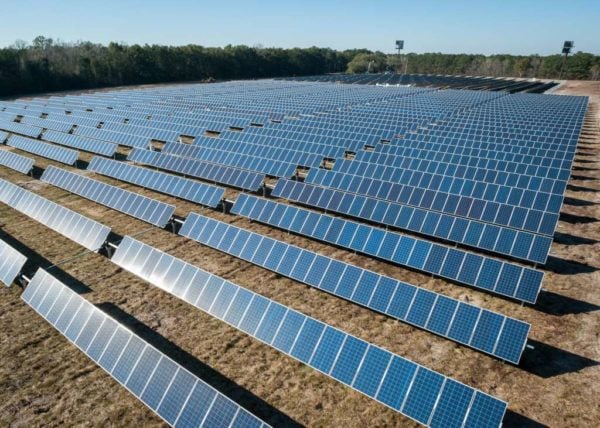
A report by a subcommittee of the county’s Joint Environmental Task Force is calling on the county to achieve carbon-neutral status by 2050.
The draft report, which will be discussed at a task force meeting today, offers recommendations on goals for adoption by the Fairfax County Board of Supervisors and the Fairfax County School Board.
Members of the task force’s energy subcommittee met several times between September 2019 and August of this year to formulate the report.
In order to achieve carbon-neutral status, the report recommends reducing emissions by 50 percent by 2030 and a net-zero energy commitment for all new county buildings and major renovation projects.
Here’s more from the report on the next steps:
1. Carbon emissions: Achieve 50% emissions reductions by 2030, as compared to the 2019 baseline.
2. Clean renewable energy: Produce 25% of the County energy use from in-County renewable energy generation by 2030, and 50% by 2040, using 2019 energy use as the baseline.
3. Building Energy Performance Standards for existing buildings: Decrease total energy usage from all County facilities by 25% by 2030 and 50% by 2040, as compared to the 2019 baseline.
4. Net Zero Energy Commitment: All new County buildings and major renovation projects beginning planning and design in 2021 and after must achieve ‘Net-Zero Energy’ (NZE) performance as defined below, unless County staff advises the Board prior to the 30% design phase why a project cannot meet the NZE standard.
The report urges the county to coordinate with other organization in order to inventory all potential solar sites, options for geothermal installations, and the launch of a communications campaign about energy and emissions.
The county is currently in the midst of developing its first Community-wide Energy and Climate Action Plan.
Photo via Unsplash

Work on the county’s new Community-wide Energy and Climate Action Plan (CECAP) is currently underway.
Now, Fairfax County officials are seeking the public’s feedback on the plan through a series of virtual public meetings.
The three meetings will aim to facilitate conversations on the count’s climate change management goals.
The CECAP Task Force will incorporate the public’s feedback into their final draft of the policy. The task force is composed of stakeholders from associations, businesses, and other organizations, in an effort to reduce the county’s greenhouse gas emissions rate.
Here’s more from the county on the plan:
The Fairfax County Community-wide Energy and Climate Action Plan (CECAP) development process is administered by the Office of Environmental and Energy Coordination with support from the Metropolitan Washington Council of Governments and the Fairfax County-based management consulting firm ICF. The plan, which will be the first of its kind for the county, will include a greenhouse gas inventory as well as targets for greenhouse gas reduction in the coming years.
The CECAP will also include actions and strategies to help mitigate climate change and to reduce the impact of climate-related events on county residents and businesses. At the conclusion of the development process, a final plan will be presented to the Board of Supervisors for adoption.
The schedule for the meetings is below:
- Thursday, August 27: 7-9 p.m.
- Tuesday, September 1: 10 a.m. to noon
- Wednesday, September 2, 2020: 7-9 p.m.
Log-in and registration information is available in the links above.
Photo via vantagehill/Flickr




